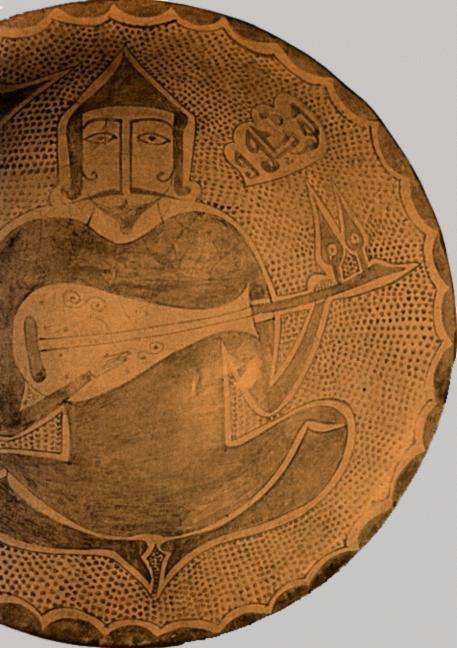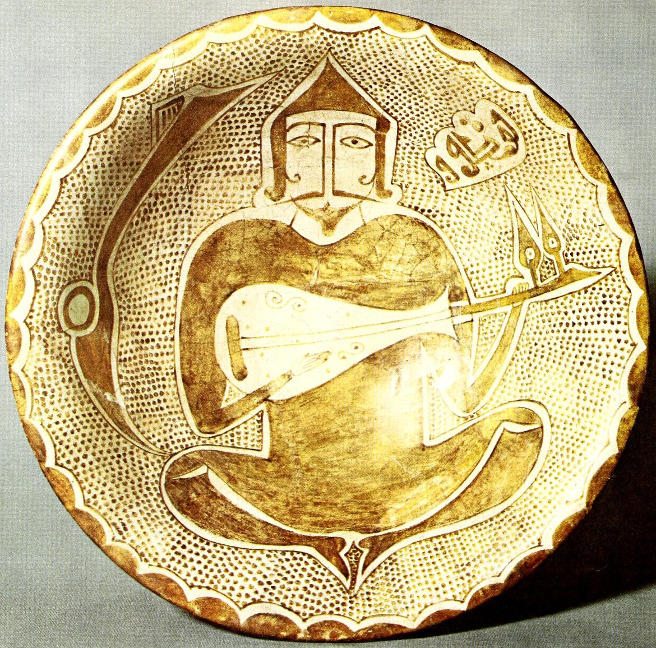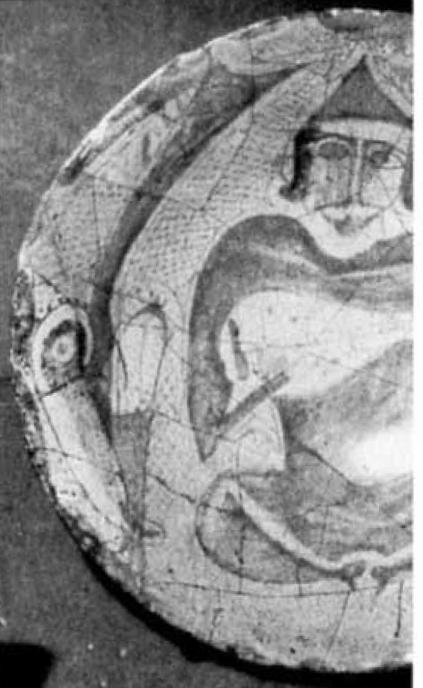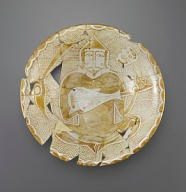Forged Abbasid Bowl with Man Playing Lute.
Smithsonian F1925.6
 Lute (from the Arab word "al-'ud") players are among the most common themes of early Abbasid art, as in this Iraqi lusterware bowl of the tenth century. |  Forged Abbasid Bowl with Man Playing Lute. Smithsonian F1925.6. From Atil, Esin Ceramics from the world of Islam (1973), no. 3. |
 Fig. 11 - Detail of a dish, earthenware with lustre decoration over a white glaze, Iraq. 10th century. Museum of Islamic Art, Cairo, showing restoration with foreign sherds and overpainting, transforming a bird into a sceptre. |
 Bowl (forgery) Iraq; early 20th century; Earthenware painted over glaze with lustre; H x W: 9.9 x 35.9 cm (3 7/8 x 14 1/8 in) Smithsonian F1925.6 The famous Freer Gallery lute-player dish first caught my attention when I noticed signs of a thick pigment on a flash-photograph I had taken. My suspicions were exacerbated by discovering a piece with identical decoration in the Cairo Museum - not only with the lute-player, but also with the curious and unexplained "symbol" on the left.30 ... Close examination reveals that the Cairo piece is heavily restored just at the place of the symbol, where a mishmash of foreign sherds and over-painting exist (fig. 11) ... The mysterious symbol is explained by comparison with other dishes - notably a piece in the Metropolitan Museum of Art - it is the tail of a bird.31 On the Cairo bowl the restorer has improvised, not understanding the original; the painter of the Freer bowl has simply copied the Cairo mis-design.32 30 - Compare Atil Ceramics, no. 3 with Pope, Survey, pl 579a. Source: p. 524, Fakes and forgeries in Islamic pottery by Oliver Watson (2004) |
See also: Abbasid Bowl with Man holding a Cup, 10th Century, Iraq. Metropolitan Museum of Art 1977.126.
Back to Abbasid Illustrations of Costume & Soldiers
Other 10th Century Illustrations of Costume & Soldiers